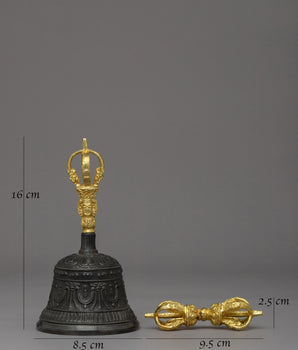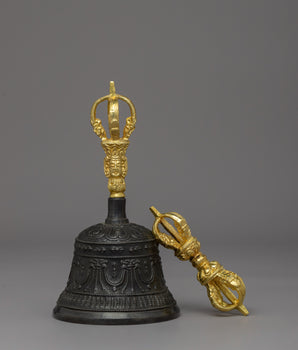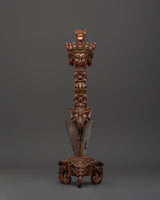

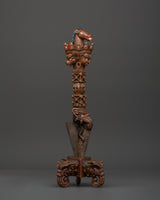

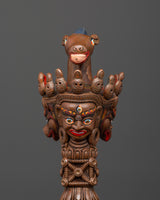

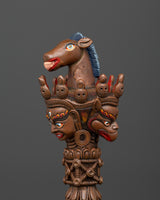

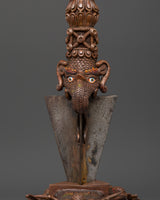
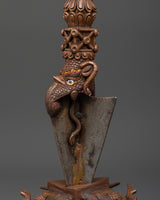
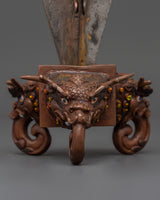
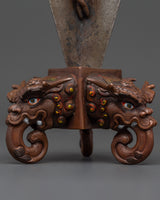
Tibetan Iron Phurba | Handmade Ritual Dagger
Tibetan Iron Phurba | Traditional Buddhist Sacred Tool
--------------------------------------------
Size: 37cm (Height) x 11.5cm (Width)
Weight: 1.65kg
Materials: Oxidized copper, Iron
--------------------------------------------
About The Ritual Item :
The Tibetan Iron Phurba is a handcrafted ritual dagger used for energy cleaning, spiritual protection, and meditation. Standing 37 cm tall and 11.5 cm wide, this unique and sacred weapon is adorned with detailed carvings, including the faces of three wrathful deities. The horse head at the top, the elephant head in the middle, and the snake head at the bottom of the dagger represent strength, wisdom, and transformation, respectively. The traditional Buddhist phurba, made of iron, is a vital ritual element believed to cut through negative energy and restore spiritual balance.
This handmade Tibetan Phurba is not only a potent tool for energy work, but it also makes a striking addition to an altar. Its rich symbolism and fine craftsmanship make it a valuable addition to any meditation room, home altar, or collection of spiritual relics. Whether you want to improve your meditation practice or add a sacred touch to your home decor, this Buddhist sacred instrument adds both visual beauty and spiritual depth to any space. This phurba is ideal for individuals seeking spiritual protection, energy clearing, or ceremonial use in Tibetan traditions. It combines traditional workmanship with potent spiritual energy.
Introduction To The Phurba :
The ceremonial dagger (Sanskrit: Kila; Tibetan: phurba) is essential for expelling evil and is considered particularly effective in neutralizing the forces that obstruct Tantric Buddhist practice. It has ancient origins, first appearing in the Indian Rig Veda as the core blade of the vajra used by Indra to destroy the primordial cosmic snake Vritra. Kila, a term derived from Sanskrit, was most likely associated with Vedic sacrifices. Meditation on the Vajrakila Tantra, an early Indian scripture first promoted in Tibet in the eighth century by Padmasambhava, one of the founding teachers of Tibetan Buddhism, is used to invoke the three-headed Vajrakila Buddha.
How to Set Up Your Buddhist Shrine?
Find a clean, quiet, and uncluttered spot
Set up an altar table, and cover it with an altar cloth that calls to you
Place your sacred item (statue, thangka, or a picture of Buddha) at the center
















